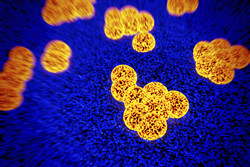Antibiotic resistance in indigenous microbiota
Antibiotics inhibit the growth of bacteria or kill them. Their widespread misuse has put a strong selective pressure on microorganisms, leading to the emergence of bacterial strains resistant to a variety of antibiotics.To limit the development and spread of such resistant strains, the mechanisms involved in antibiotic action and the emergence of resistance need to be elucidated. Scientists from the EU-funded ANTIRESDEV(opens in new window) project therefore studied the effects of administering a range of antibiotics (amoxicillin, minocycline, ciprofloxacin, clindamycin) to healthy volunteers. They examined the impact of the antibiotics on the emergence of resistance in their indigenousmicrobiotas. The rationale was that the distinct chemical nature, pharmacokinetics and antimicrobial spectrum of each antibiotic is likely to cause different patterns of resistance emergence and persistence. Four cohorts of healthy individuals were recruited. After being administered a specific antibiotic, they were screened for the presence of antibiotic-resistant bacterial species at various body sites using culture-dependent and molecular techniques. Samples were collected before treatment and at certain time points (upto one year) after treatment. Soon after antibiotic administration there was a transient increase in the proportions of antibiotic-resistant bacteria for all tested antibiotics, with the exception of amoxicillin. In the case of ciprofloxacin and clindamycin, increased proportions of some resistant species were observed up to one year after antibiotic administration.. None of the four antibiotics appeared to create selection pressure for the emergence of several pathogens of major clinical importance including Staphylococcus aureus, Pseudomonas aeruginosa and Acinetobacter species. Culture-independent analysis revealed that administration of minocycline, clindamycin and ciprofloxacin, but not amoxicillin, had a profound effect on the oral and intestinal microbiotas. However, after one month, the oral microbiota was similar to that which existed prior to antibiotic administration. One month after the administration of amoxicillin or minocycline, the intestinal microbiota was similar to that found prior to antibiotic administration. In contrast, a return to pre-administration values took 4 months in the case of ciprofloxacin and between 4 months and one year for clindamycin. Taken together, the ANTIRESDEV study demonstrated the new potential of some antibiotics to induce the emergence of resistant strains in healthy individuals. It also revealed their potential to disrupt the protective indigenous microbiotas at various body sites. This information could help clinicians to select the appropriate antibiotic to minimise both the emergence of antibiotic resistance and the disruption of the human microbiota.







